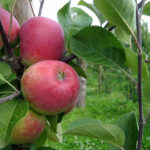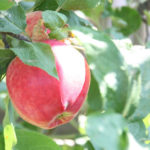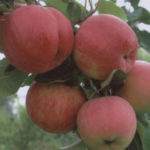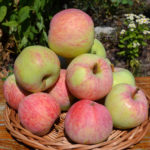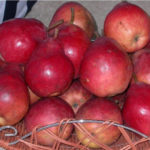Apple variety Williams Pride
The migration of fruit crops is a very useful and necessary phenomenon. It not only plays a big role in breeding, but also makes it possible for ordinary gardeners to compare different varieties and select the most worthy ones for their garden. For example, domestic gardeners almost unanimously recognized the American Williams Pride apple tree as the best summer variety. The pedigree of our hero is very rich, because in order to create such a culture, American breeders had to cross several fairly well-known apple varieties in stages: Welsey, Rum Beauty, Starr, Melba, Jonathan, Red Rom, Molis Delicious, Julired. After the crossing procedure, which took place in 5 stages, and as a result of long selections, scientists were able to isolate a seedling, which in 1988 was presented as Williams Pride. Literally translated, the name means "Williams' Pride". The variety is not registered in the State Register of Breeding Achievements.

Description
Apple tree Williams pride has good growth vigor. The tree is medium-sized, on different types of rootstocks it grows from 3 to 5 m, with a strong trunk and medium-developed branches branching out almost at right angles. The crown is broadly oval, medium thickened. Shoots are long, not thick, slightly geniculate, brownish-brown, strongly pubescent. Lentils are small, round, and numerous. Shoot-forming ability is strong. The buds are small, cone-shaped, medium pubescent, brown. They have medium excitability. The crop is mainly formed on annual growths, ringlets and fruit twigs. The leaves are bright green, medium or small in size, ovoid, with a pointed apex and a rounded, often asymmetrical base; the edges are raised, slightly wavy, blunt-serrate. The surface of the leaf blade is slightly wrinkled, slightly shiny, the underside is strongly pubescent. The petiole is long, not thick, not colored. Stipules are of medium length, lanceolate. The flowers are pink at the beginning of dissolution, white in full disclosure. The length of the petal is 20 mm, the width is 12 mm, the diameter of the corolla of the flower is 40 mm.

Fruits are of medium one-dimensionality, rounded-conical in shape, with some asymmetry and slight ribbing. The usual apple weight is 120 - 160 g, but specimens weighing more than 250 g can ripen. The funnel is of medium depth and width, often has traces of rustiness. Shallow saucer, medium width, wide-fold. The calyx is small, closed; the subacheal tube is elongated-conical, small. Onion-shaped heart, large. The seed chambers are small, closed. Seeds are ovoid, small, dark brown. The peduncle is short, not thick. The skin is thin, elastic, dense, bluish waxy bloom, strongly pronounced. The main color is yellowish-greenish, the integumentary color is manifested in the form of a not very bright blurry-striped dark red blush on most of the surface (from 70 to 90%). At the moment of consumer ripeness, the color becomes dark violet-red. The subcutaneous points are small, light, as if slightly depressed. The pulp is creamy, with yellowness, a pinkish tint appears near the skin. The consistency is medium-grained, dense, crunchy, very juicy and aromatic. The taste, according to many gardeners, is excellent, sweet and sour, rich, with a slight astringency, which does not spoil the impression at all, but adds piquancy. Assessment of tasters - from 4.5 to 5.0 points. 100 g of raw pulp contains: dry matter 9.68 - 12.07%, sugars 6.82 - 8.76%, acids 0.68 - 0.71%, vitamin C 3.61 - 5.13 mg.
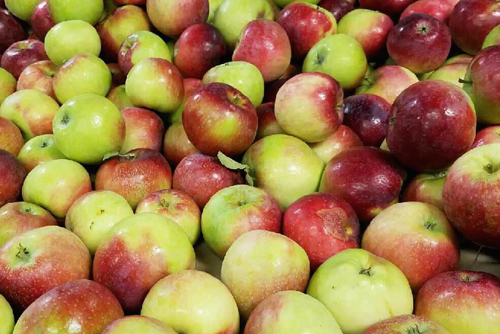
Characteristics
- The American variety is rather fast-growing. The first crop appears already in the 3rd year after planting;
- Williams Pride blooms in medium terms, so it is not afraid of return frosts;
- in terms of ripening, it belongs to early summer. Fruits ripen in late July or early August;
- the crop ripens unevenly, so you will have to harvest the fruits 2 - 3 times. For private gardening, this is good, as it allows you to extend the consumption of fresh apples.Not very suitable for industrial cultivation, you will have to hire workers for cleaning several times;
- fruits after ripening are quite firmly attached to the branch;
- many sources call fruiting annual. But foreign sites mention a possible periodicity, which occurs every 2 to 3 years;
- productivity increases from year to year. 7 - 9-year-old apple trees bring 39 - 57 kg per tree (54-118 per rootstock);
- winter hardiness is high. But at the same time, the apple tree does not like high temperatures; in the heat, the development of the plant stops;
- the culture has high immunity. Declared resistance to scab and powdery mildew. Gardeners note that our hero is able to resist moniliosis. But at the same time, the variety is not resistant to common or European crayfish, fruits can be affected by fruit rot and bitter pitting;
- transportability is high, apples remain marketable;
- keeping quality for a summer variety is not bad - up to 1 month in the refrigerator;
- the way of use is universal. Of course, apples are primarily used in their natural form, as a dessert, they are added to fruit salads, combined with soft cheese.
Pollinators
Apple tree Williams pride is self-fertile, therefore it needs pollinators. Recognized as the best: Melba, Julia, Folding, Katya, Bradburn, Golden Delicious.
Agrotechnics
It is not difficult to care for this variety. But you should be aware of some features. The culture needs sufficient watering, especially in a hot region. In acidic soils, it will suffer from poor absorption of iron. Requires rationing, otherwise there will be a lot of fruits, but they will be small, and fewer flower buds will be laid next year. The amount of fertilizer depends on the quality of the soil.
Domestic gardeners highly appreciated the American apple tree. Resistance to major diseases, winter hardiness and relatively small size make it easier to care for the crop. The fruits of our hero are not only beautiful, they have a wonderful taste. The ripe crop will wait for the summer resident on the tree, since the variety does not crumble for quite a long time. Small shortcomings can be considered the need for rationing of the yield and the presence of a pollinator.
There is no official information regarding the description and characteristics of our hero. As a result - the emergence of the domestic variety Bariton, obtained in 1999 by LLC "Rostok" from sowing seeds of an unknown apple tree. According to most gardeners, the domestic novelty is nothing more than the Williams Pride apple tree.
